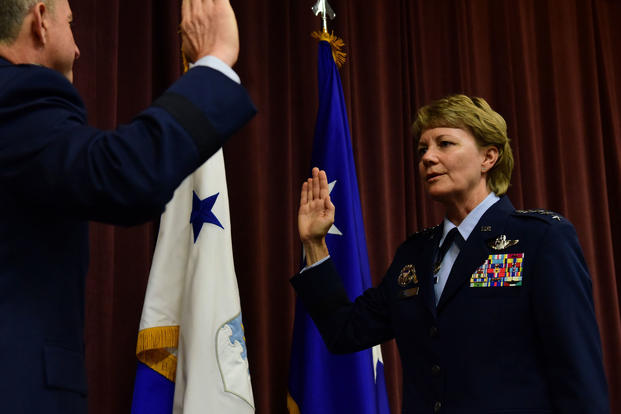NATIONAL HARBOR, Md. -- A day after the Air Force's top civilian announced the service wants to increase its operational squadrons by almost 25 percent, the four-star general in charge of Air Mobility Command acknowledged that more training squadrons and additional support infrastructure would likely be needed in order to execute the plus-up.
Air Force Secretary Heather Wilson announced Monday at the Air Force Association's Air, Space and Cyber conference here that the service wants a total of 386 operational aircraft squadrons, an increase of 74 over its current strength. The same day, the three-star head of the Air Force Personnel Center, Lt. Gen. Brian Kelly, said the service would need to grow by about 40,000 airmen to reach those levels.
All this projected growth comes amid an ongoing pilot shortage that has the Air Force spearheading a range of initiatives, including a fly-only track and an accelerated training pipeline pilot program, to create and retain more pilots. But to date, no numbers have been released regarding how many new training squadrons the Air Force expects to need to resource its operational growth.
Gen. Maryanne Miller, the newly installed commander of Air Mobility Command, told reporters Tuesday that those conversations had yet to take place.
"[Wilson] talked about the fist and the body ... 386 right now defines the fist," Miller said. "What's that operational impact, the punch that allows us to achieve the objectives we need to achieve."
The force behind the 386-squadron "fist," she said, would need to be in place and would be the subject of planning within the service and with leaders on Capitol Hill.
"The training infrastructure, the support infrastructure, the actual bodies, the infrastructure to achieve 386 operational squadrons, to bridge that gap," she said. "So we've not looked at that."
Different studies, including the service's ongoing Mobility Capabilities and Requirements study, set to wrap up this fall, may inform decision-making, she added.
"We just cannot afford to have our strategy driven by the budget anymore," Miller said. "Our strategy has to drive our way forward. So we'll continue to work with Congress on this and shape our force that we need and the conversations that will go around that."
Unofficial estimates put the cost of 74 new operational squadrons at an additional $13 billion per year, and it's not yet clear how the Air Force plans to pay for this planned growth. No estimates have been made regarding the cost of infrastructure and training elements to sustain this plus-up.
"At some point, we will look at the support behind that ... and the cost involved. And we'll have a conversation about that too," Miller said.
-- Hope Hodge Seck can be reached at hope.seck@military.com. Follow her on Twitter at @HopeSeck.










